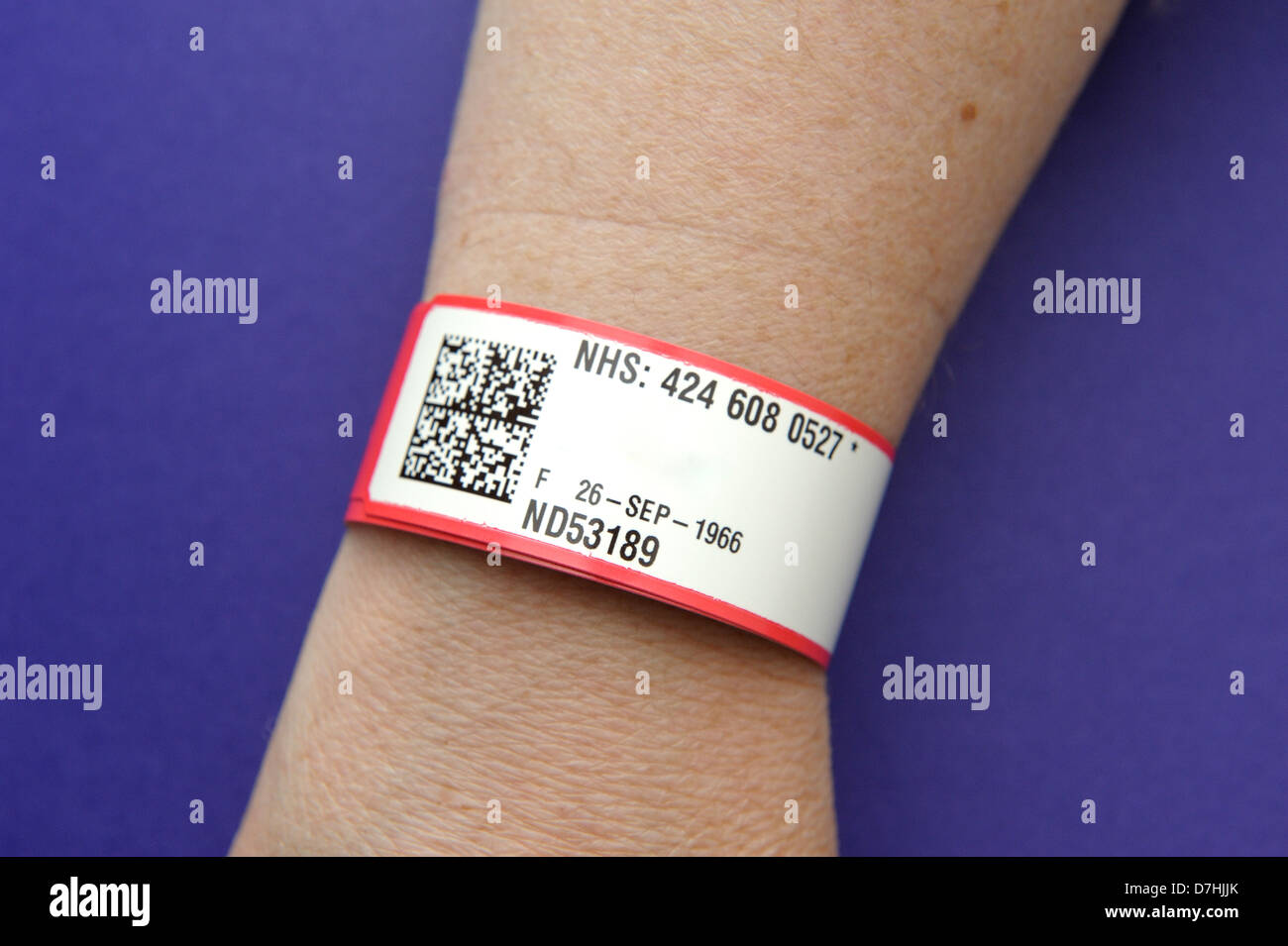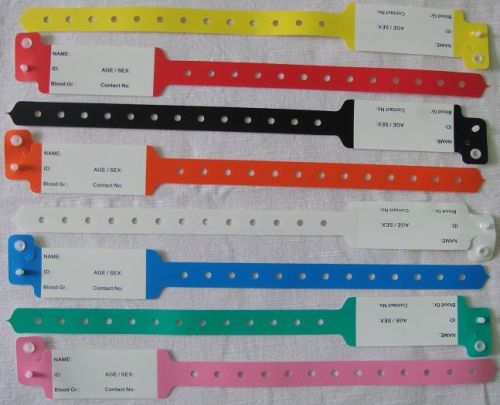Discovering the Different Kinds Of Patient Identification Band Used in Clinical Facilities
In the elaborate globe of health care, the vital duty of Patient Identification bands often goes unnoticed. These bands, varying from basic paper wristbands to innovative RFID bands, create the foundation of Patient security methods, ensuring precision in Patient Identification. Yet, the substantial diversity of these bands, each with its unique benefits and constraints, is typically neglected. As we navigate via this subject, one may acquire understanding right into the subtle intricacies and vital value of such bands in medical centers.
Understanding the Relevance of Patient Identification Bands
While they might appear like mere devices, Patient Identification bands play an important role in medical centers. These bands serve as a crucial device for verifying Patient identity, protecting against clinical mistakes connected to misidentification. The bands generally display crucial info such as the Patient's name, age, blood group, and any type of well-known allergic reactions. They allow healthcare professionals to quickly access this essential details, thereby assisting in prompt and exact clinical treatment. Patient Identification bands additionally aid in streamlining management jobs, ensuring precise record-keeping and payment. In spite of their simpleness, these bands personify the principle of Patient security, a cornerstone of high quality healthcare. Without them, the danger of medical errors, and subsequently, Patient damage, may substantially raise.
Traditional Paper Wristbands: Their Use and Limitations
Conventional paper wristbands have actually been a staple in Patient Identification across different medical facilities. While their use prevails, they harbor particular constraints that might influence their effectiveness in Patient management. This section will certainly concentrate on the extent of their application and the intrinsic downsides linked with their use.
Paper Wristbands: Use Range
In the realm of Patient Identification, paper wristbands have actually long held a crucial function. These bands are usually utilized in outpatient setups, where the Patient's remain is temporary. The wristbands contain crucial information such as the Patient's name, date of birth, and a distinct Identification number. This easy, yet reliable system, allows doctor to swiftly and properly recognize patients, making sure the appropriate treatment is provided. Paper wristbands are additionally made use of in emergency situations, where fast Identification is critical. Their use reaches events like blood donation drives and mass inoculation programs, even more stressing their versatility. In spite of advancements in modern technology, the modest paper wristband continues to be a reliable and cost-effective solution for Patient Identification in numerous healthcare scenarios.
Limitations of Paper Wristbands
Regardless of their extensive use, paper wristbands are not without their disadvantages. In enhancement, paper wristbands commonly lack the technical capabilities of more modern-day options, such as barcoding or RFID chips, restricting their functionality to simply presenting created information. Paper wristbands can trigger pain or skin irritation to some people, especially when used for extensive periods.
Barcoded Wristbands: Improvements in Patient Identification
While Patient Identification has long been a crucial aspect of healthcare, the introduction of barcoded wristbands symbolizes a considerable leap ahead. These bands take advantage of the simplicity of barcoding technology, allowing for Patient details to be swiftly checked and accessed. They improve the speed and precision of Patient Identification, decreasing the risk of medical mistakes connected to misidentification.
Superhigh Frequency Identification (RFID) Bands: a Step In The Direction Of Futuristic Medical Care
The advancement of Patient Identification bands has caused the appearance of Radio Regularity Identification (RFID) Bands (patient identification band). These innovative gadgets present key advantages for health care facilities, using an extra reliable and highly progressed ways of Patient Identification. The application of RFID in healthcare is a substantial action towards an extra futuristic approach to Patient management and safety and security
Comprehending RFID Bands

RFID Bands: Secret Advantages
Accepting a future where technology and healthcare combine, superhigh frequency Identification bands offer numerous crucial advantages. Primarily, these bands improve Patient security by providing exact, immediate Identification, thereby lowering clinical errors. RFID bands can save a huge amount of my response Patient data, consisting of case history and allergic reactions, allowing personalized treatment. They also streamline management tasks, as the automated information entrance replaces hands-on processes, boosting effectiveness and reducing documents. Additionally, RFID bands supply real-time tracking of people, important in high-risk settings such as surgery or extensive care. These bands are sturdy and resistant to environmental elements, making certain consistent performance. On the whole, RFID bands represent a considerable innovation in Patient Identification innovation, profiting both patients and healthcare carriers.
Executing RFID in Healthcare
These bands offer a smooth way to track and recognize patients, guaranteeing their safety and enhancing efficiency in therapy procedures. RFID bands reduce medical mistakes by providing precise Patient Identification, which is vital in preventing misdiagnosis or incorrect medicine administration. Therefore, the execution of RFID bands is a considerable step in the visit homepage direction of boosting Patient security and medical care delivery.

Color-Coded Wristbands: Aiding in Quick and Accurate Diagnosis
In the busy setting of a medical facility, color-coded wristbands have arised as crucial devices for swift and precise Identification of an individual's medical problem. These wristbands, put on by clients, bring details colors that correspond to different clinical conditions or standings. This system is created to provide instant aesthetic signs to healthcare carriers, enhancing Patient security and care top quality.
Methods for Reliable Implementation and Monitoring of Patient ID Bands
Achieving optimal use of Patient Identification bands necessitates a well-structured technique for their application and monitoring. YOURURL.com The primary step entails training all wellness employees on the importance of correctly using and reviewing these bands. Hospitals ought to systematize the usage of ID bands throughout all departments, guaranteeing uniformity and minimizing inconsistencies. Normal audits ought to be conducted to validate adherence to plans and to remedy any inconsistencies. Patient education and learning is also essential; people have to recognize the purpose of the bands and the requirement for their continuous wear. patient identification band. It's important to have a back-up plan in place, such as barcode scanning or biometrics, to make certain that Patient Identification is never compromised.
Final thought
Patient Identification bands are crucial in medical facilities to ensure safety and security and precision. Effective implementation and administration of these bands can substantially lower clinical mistakes, enhance efficiency, and boost general Patient care.
These bands, varying from basic paper wristbands to innovative RFID bands, create the foundation of Patient security procedures, making certain accuracy in Patient Identification.The advancement of Patient Identification bands has brought regarding the development of Radio Frequency Identification (RFID) Bands. In general, RFID bands represent a significant advancement in Patient Identification modern technology, profiting both individuals and health care suppliers.
RFID bands minimize medical errors by providing exact Patient Identification, which is important in protecting against misdiagnosis or wrong medicine management. Patient education is also crucial; people need to comprehend the purpose of the bands and the need for their consistent wear.